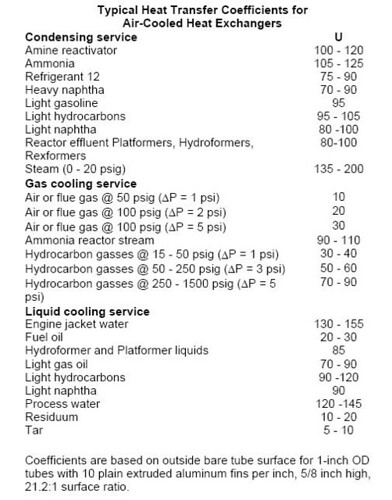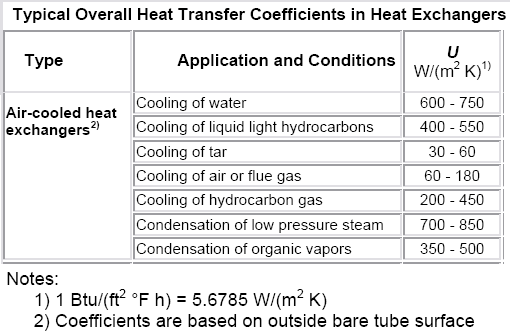Monday, August 20, 2007

Basic heat transfer relationships is apply to Air-Cooled Heat Exchanger (ACHE). The fundamental heat ransfer equation :
Q = U. A. LMTD.F
where
U = overall heat transfer coefficientA = Heat transfer area
LMTD = Log mean temperature difference
F = Correction factor
Typical heat transfer coefficient for Air-Cooled Heat Exchangers
Source : DELTA T
Labels: Air Cooler, Heat Exchanger, Heat Transfer, Shell and Tube Heat Exchanger

